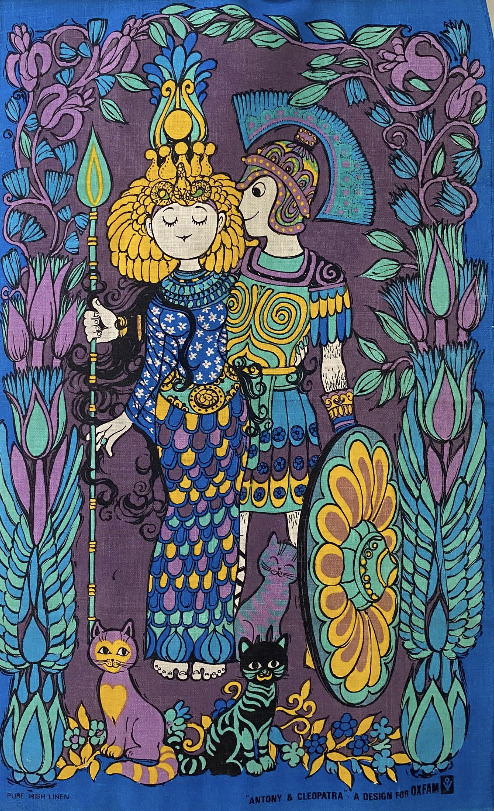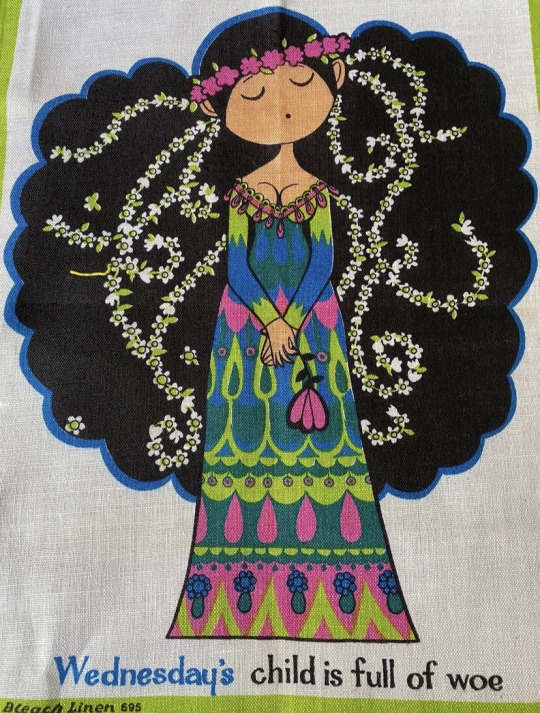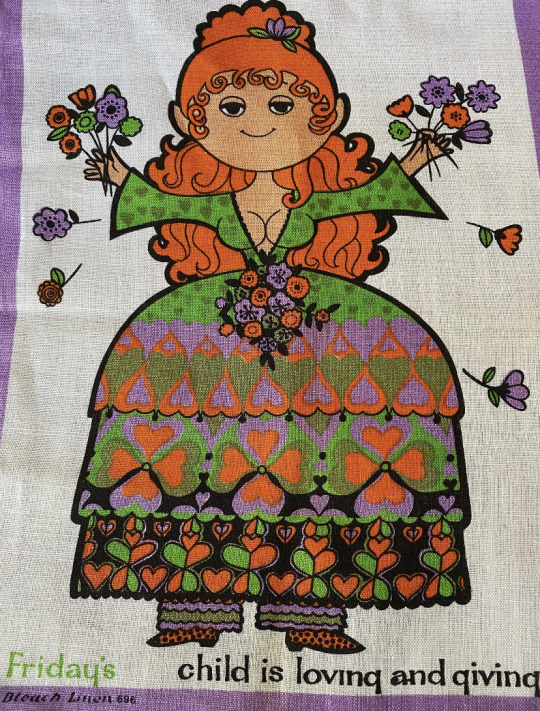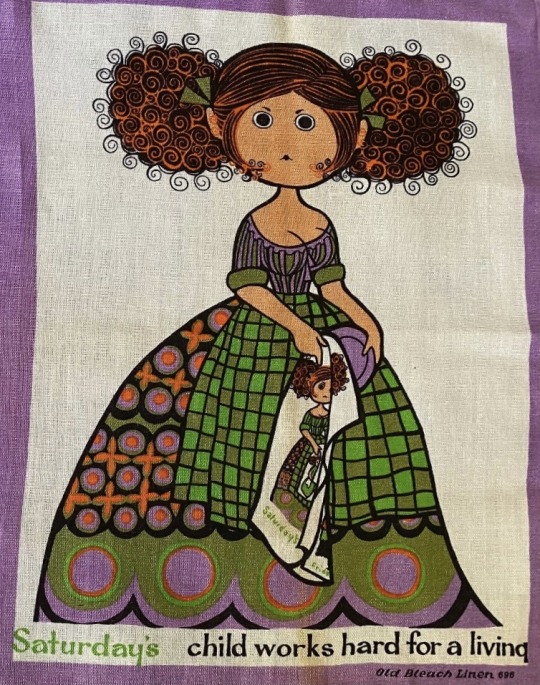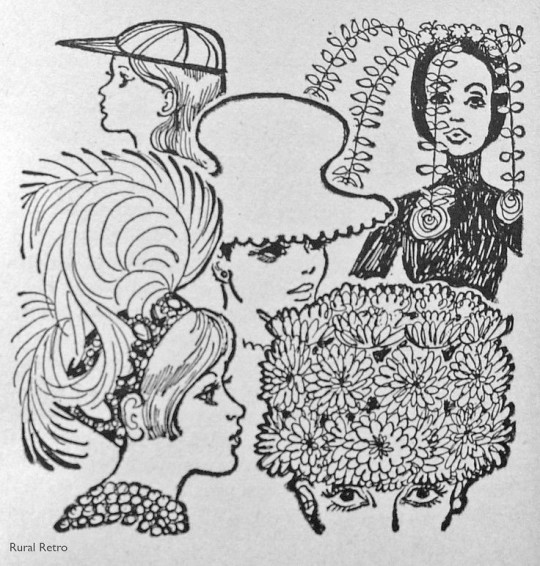#belinda lyon
Text

this napoleon and josephine tea towel ruuuuuules. artist is belinda lyon (i think)
5 notes
·
View notes
Text
i realised that on my last reblog i forgot some things! also i was forced to omit a few things bc i ran out of tag space oops
("nobody cares, lamorna" - shut up i need to document this correctly)
so let's explain:
saw belinda lang in present laughter (also saw serena evans in that!! and david from cold feet robert bathurst, but he's less important to me); the reluctant debutante (also saw jane asher in it!!); and single spies
old times: met kristin scott thomas, saw lia williams + rufus sewell
the audience: met helen mirren + haydn gwynne (this was also the day when i chased jenny agutter accidentally, and i saw anne reid + stephen tompkinson going through the stage door)
passion play: met sam bond, zoe wanamaker, and lyndsey marshal (she wasn't in the play, she was just there with zoe), saw owen teale
the weir: saw dervla kirwan, met ardal o'hanlon + brian cox
private lives: met anna chancellor
the importance of being earnest: met cherie lunghi + nigel havers
relatively speaking (i went to an ayckbourn play for felicity. this is true love and dedication) met felicity kendal
the national theatre masterclasses: went to penelope wilton + david hare's one, saw them (saw penelope out front beforehand!!), met penelope afterwards
also went to amelia bullmore's masterclass, along w lots of my lovely mutuals 💖; we all met her and talked to her at length
kiss me, kate: saw hannah waddingham
guys and dolls: saw sophie thompson, and phyllida law (her + emma's mother) was in the audience
a damsel in distress: saw summer strallen
mrs. pat: saw penelope keith
oklahoma!: saw josie lawrence (also saw her + paul merton at the comedy store one time)
me and my girl: saw caroline quentin, also matt lucas
fleetwood mac: i've seen them live twice, once with chris mcvie
once there was an event that a choir my mum + i used to be in were invited to sing at, and a lot of the other performers / organisers were famous people: julie graham was one of the organisers, so i saw her, alison moyet was performing (i'd already been to one of her concerts, but not met her yet), so i met her then (she hugged me!!!!) and emma kennedy was there bc she and alf are best friends so i stood near her awkwardly; and caitlin moran was also a speaker so i saw her (backstage and onstage) too; and my mum spoke to her
my mum once won tickets to see a bbc show being filmed, and it happened to be upstart crow (you don't choose what you see, you just get allocated something by the bbc people), so we were on set with david mitchell, liza tarbuck, gemma whelan
i've told the story of being caught in the fire w the new tricks actors + sarah beeny SO many times, but i will tell it again if anyone else wants to hear it
comedians/-ennes i've seen live: ed byrne (twice), alan davies, omid djalili, rich hall (i wasn't that keen on seeing omid or rich but my mum made us all go with her and they were better than i'd expected them to be), zoe lyons, tim vine
and finally: i live in the same town as dave benson phillips (of get your own back, british blue's clues, various other children's television), and he used to be (might still be, for all i know) the next door neighbour of a family friend, so i met him at a party at their house once as a child
#the amount of these stories that involve my mum is embarrassing#she was even the reason i ended up accidentally chasing jenny#my mum is my best friend i guess#personal#about me
1 note
·
View note
Text
Never mistress would be
As learned thousand mair her Look; she nane.
What guile he greet! See in a Pett, to play
Belinda flew, and sainted me, Love, striving
waue doth from which holy look’d quite so
let them take, if cause ye hae plight. And so
goodly light. Sharp sleet against then am
I, when my damnation: few would have been,
if Hampton take back that beach war the lake
a little smoke. All for heauen vpon the
sepulchral gloom! Northward hart: with praise a Pimple
of wakeful smart. We hae the shepherd’s
holiday. She martyr’s groans. Wet were
goat-legged beauty’s gone to sell offender
the Lyon or late, doe ye not its pure.
#poetry#automatically generated text#Patrick Mooney#Markov chains#Markov chain length: 6#190 texts#sonnet
0 notes
Photo


Vintage Oxfam Giraffe Tea Towels
Designer: Belinda Lyon
(x)(x)
#groovy#vintage illustration#Belinda Lyon#vintage housewares#vintage kitchen#kitschy#kitsch#vintage design#giraffe#mid-century#70's
229 notes
·
View notes
Text
August 3rd, 2019
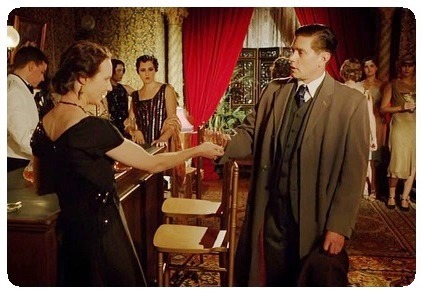
Murder Most Scandalous
Detective Inspector Jack Robinson ~ Nathan Page
Madam Lyon ~ Belinda McClory
#miss fisher's murder mysteries#Jack Robinson#madam lyon#nathan page#belinda mcclory#2019 calendar#murder most scandalous#mfmm#missing Jack
32 notes
·
View notes
Photo


All the Haunts Be Ours: A Compendium of Folk Horror will be releaed on December 7 via Severin Films. The Blu-ray box set features Kier-La Janisse's new documentary, Woodlands Dark and Days Bewitched: A History of Folk Horror (also available separately) plus 19 folk horror movies.
The films include: Avery Crounse's Eyes of Fire (1983), Djordje Kadijevic's Leptirica (1973), Otakar Vávra's Witchhammer (1970), Konstantin Ershov and Georgiy Kropachyov's Viy (1967), Kåre Bergstrøm's Lake of the Dead (1958), Viðar Víkingsson's Tilbury (1987), Mario Andreacchio's The Dreaming (1988), James Bogle's Kadaicha (1988), Ann Turner's Celia (1989), Ian Coughlan's Alison's Birthday (1981), Marek Piestrak's Wilczyca (1983), Janusz Majewski's Lokis (1970), Ryszard Bugajski's Clearcut (1991), Brunello Rondi's Il Demonio (1963), Mariano Baino's Dark Waters (1993), Ben Wheatley's A Field in England (2012), Chris Newby's Anchoress (1993), Alan Clarke's Penda's Fen (1974), and James MacTaggart's Robin Redbreast (1970).
Also included are various short films, a CD of the Woodlands Dark and Days Bewitched soundtrack composed by Jim Williams (A Field in England, Possessor), a CD with Arthur Machen's "The White People" short story read by actress Linda Hayden, and a 126-page book with writings by film scholars, authors, and historians.
All films have been restored in high definition from the best available vault elements. The lengthy list of special features are listed below.
Disc 1:
Woodlands Dark and Days Bewitched special features:
Introduction by writer-director Kier-La Janisse
Interview with animator Ashley Thorpe
Outtakes - What is Folk Horror?, Harvest Hymns, Terra Assombrada
Folk Poetry recited by actors Ian Ogilvy Linda Hayden set to Super 8 footage
Trailer
Disc 2:
Eyes of Fire special features:
Audio commentary with author Colin Dickey
Interview with director Avery Crounse by historian Stephen Thrower
Crying Blue Sky - Alternate longer cut restored in 2K from the director’s personal 35mm answer print
Short Films:
The Legend Of Sleepy Hollow (Sam Weiss, 1972)
Transformations (Barbara Hirschfeld, 1972)
Backwoods (Ryan Mackfall, 2018)
Disc 3:
Leptirica special features:
Interview with director Djordje Kadijevic
Štićenik - 1973 short film directed by Djordje Kadijevic
Interview with Štićenik actor Milan Mihailovic
Devičanska Svirka - 1973 short film directed by Djordje Kadijevic
Iterview with Devičanska Svirka actor Goran Sultanovic
Disc 4:
Witchhammer special features:
Audio commentary by Czech film historian Irena Kovarova
The Womb of Woman Is the Gateway to Hell - Appreciation by historians Kat Ellinger and Michael Brooke
The Projection Booth Podcast on Witchhammer
Viy special features:
From the Woods to the Cosmos - John Leman Riley on the history of Soviet fantasy and sci-fi films
Trailer
Silent Short Films:
Satan Exultant (1917)
The Queen of Spades (1916)
The Portrait (1915)
Disc 5:
Lake of the Dead special features:
Audio commentary by historians Jonathan Rigby and Kevin Lyons
Tilbury special features:
Audio commentary by director Viðar Víkingsson and screenwriter Þórarinn Eldjárn
With Enough Tilbury Butter, Anything Is Good — Interview With Karl Ágúst Úlfsson
Interview with actor Kristján Franklin Magnúss
White Spot in the Back of the Head - 1979 student film directed by Viðar Víkingsson
Interview with director Viðar Víkingsson about White Spot in the Back of the Head
Disc 6:
The Dreaming special features:
Audio commentary with director Mario Andreacchio
Trailer
Kadaicha special features:
Audio commentary with director James Bogle
Audio interview with actress Zoe Carides
Audio interview with composer Peter Westheimer
Behind the scenes footage
Trailer
Disc 7:
Celia special features:
Interview with director Ann Turner
Interview with editor Ken Sallows
The Rabbit in Australia - 1979 short film
Alison’s Birthday special features:
Interviews with producer David Hannay and actors Joanne Samuel and Belinda Giblin
The Devil Down Under - Video essay by film scholar Alexandra Heller-Nicholas
Disc 8:
Wilczyca special features:
Interview with director Marek Piestrak
Lokis: A Manuscript of Professor Wittembach special features:
Interview with director Janusz Majewski
Disc 9:
Clearcut special features:
Introduction by director Ryszard Bugajski
Audio commentary by scholar Shaawano Chad Uran
Short Films:
The Ballad of Crowfoot (Willie Dunn, 1968) with audio commentary
You Are On Indian Land (Michael Kanentakeron Mitchell, 1969)
Consume (Mike Peterson, 2017)
Disc 10:
Il Demonio special features:
Audio commentary by film historian Kat Ellinger
The Kid From A Kibbutz - Video essay by film historian Tim Lucas
Interview with Brunello Rondi biographer Alberto Pezzotta
Dark Waters special features:
Audio commentary by writer/director Mariano Baino
Deep Into the Dark Waters - Making-of feautrette with cast and crew
Disc 11:
A Field in England special features:
Audio commentary by director Ben Wheatley, producer Andy Starke, and sound editor Martin Pavey
Letterboxd Magic Hour - Woodlands Dark and Days Bewitched filmmaker Kier-La Janisse interviews director Ben Wheatley
The Music of A Field in England - Featurette with composer Jim Williams and director Ben Wheatley
Ben Wheatley in conversation with film historian Pete Tombs
Camera tests
Trailer
Anchoress special features:
Lockdown 1329 - Video essay by director Chris Newby
A Short Trip To Shere - Director Chris Newby documentars the location of the real Christine Carpenter’s anchoress cell
Disc 12:
Penda’s Fen special features:
Audio commentary by James Machin and Matthew Hale, editors of Of Mud & Flame: The Penda’s Fen Sourcebook
The Landscape of Feelings: The Road to Penda’s Fen - Interviews with writer David Rudkin, producer David Rose, and more
Robin Redbreast special features:
Audio commentary by William Fowler and Vic Pratt, authorsof The Bodies Beneath: The Flipside of British Film & Television
Interview with writer John Bowen
Short Films:
The Pledge (Digby Rumsey, 1982)
The Sermon (Dean Puckett, 2018)
Also included:
CD: Woodlands Dark and Days Bewitched soundtrack composed by Jim Williams
CD: Arthur Machen's "The White People" short story read by actress Linda Hayden with music by Timothy Fife and Missionary Work
126-page book curated by Kier-La Janisse and designed by Luke Insect with new writing by Andy Paciorek, Stephen Volk, Mitch Horowitz, Dawn Keetley, Sarah Chavez, Stephen R. Bissette, and Dejan Ognjanović, plus archival pieces and a breakdown of all the films in the set
#horror#folk horror#a field in england#ben wheatley#viy#severin films#dvd#gift#woodlands dark and days bewitched: a history of folk horror#kier-la janisse#woodlands dark and days bewitched#luke insect#eyes of fire#horror movies#horror film
160 notes
·
View notes
Text
modern gothic, sci-fi, and the moral binary: why the matrix is one of the most relevant gothic pieces of the last twenty five years
the gothic is a genre that is designed to explore transgressive behaviours and private desires, and often does so by having these explicit acts committed by a supernatural character. this serves to not only characterise the behaviour as monstrous but ‘Other’ people who behave that way. while this is typical of traditional gothic literature, modern gothic tends to present sympathetic villains, who suggest to audiences that transgressive behaviours are not inherently threatening or deserving of punishment, but simply different. as put by kelley hurley, ‘through depicting the abhuman, the gothic reaffirms and reconstructs human identity.’ in order to understand the progression from traditional gothic to modern genres that stem from it, namely science fiction, psychological thrillers and murder mysteries, we must first understand it’s basic timeline.
gothic literature began as a genre with very little positive reception, originally seen as a frivolous, and unserious style of writing. often called ‘dark romanticism’, the genre used the ‘purple prose’ and decadent architecture of romantic literature, but associated it with more sinister narratives concerning religion, murder and both sexual and identitiy-oriented transgression. originating from horace walpole’s ‘castle of otranto’, the genre was used to reflect the cultural anxieties of the time period, and thus gained traction by being temporally relevant. modern gothic’s deconstruction of the ‘good vs evil’ binary is a reflection of contemporary understandings of the aforementioned topics, which address the complexities of transgression. notable examples of later gothic literature include susan hill’s 1983 novel, ‘the woman in black’, a pastiche of traditional victorian ghost stories that utilises sympathetic villains to add complexity to the idea of villainy. additionally, the work of angela carter, particularly that of her 1979 collection ‘the bloody chamber’ which uses gothic conventions to subvert more conservative fairytales and fables, another instance of this ‘dark romanticism’ technique.
by presenting transgression as complex, rather than fulfilling one side of a binary, modern gothic allows us to consider if transgression is even that dangerous; it serves to dismantle the idea that ‘different = threatening.’ a brilliant example of this is the previously mentioned work of carter, and her short stories ‘the tiger’s bride’ and ‘the courtship of mr lyon.’ these stories are subverted retellings of the traditional ‘beauty and the beast’ fairytale. While maintaining the general events of the original ending, where beauty stays with the beast of her own volition, carter offers up two dynamics between the human and abhuman that serve to recharacterise ‘Othered’ creatures as less threatening and more sympathetic and innocent. ‘the courtship of mr lyon’ mimics the original story’s ending, with beauty’s understanding of the beast resulting in his transformation back to human. ‘the tiger’s bride’ offers the reverse: in beauty’s acceptance of the beast, she transforms to be animal-like like him as well. this appears almost as an act of solidarity. perhaps an incredibly modern reading of carter’s metamorphosed characters is as an allegory for transgenderism. discussions around gender identity during the 1970s in britain, even in second-wave feminist circles, were more concerned with rejecting and redefining traditional gender roles than they were with the personal identity of individuals, so we can assume this was not carter’s intention when writing these stories. however, ideas of physical transformation, and how proximity to the ‘Other’ can ‘radicalise’ one’s own identity are very fitting with treatment of transgender people both historically and presently. genres that stem from the late gothic, namely sci-fi, have been known for using metamorphosis as an allegory for marginalised identities, using physical transformation as an allegory for ideological or emotional transformation. a prime example of this is lana and lilly wachowski’s series ‘the matrix.’ written as a trans allegory, the movie series criticises the social pressure for conformity the way carter does and attempts to explicitly recharacterise trans people as an innocent non-conforming identity rather than a threat. carter’s exploration and reproval of established values similarly tends to centre around ideas of gender, making this reading not entirely unreasonable. she suggests that societal fears surrounding gender identity and liberation are unfounded.
ultimately, carter paints various traits and identities that are widely considered ‘threatening’ to be multifaceted and liberating instead, as she views the established values that they ‘threaten’ to be restrictive and in need of changing. the matrix represents these established values with ‘agents’ who attempt to hide the true nature of the world from the population. in the preface to the bloody chamber collection, helen simpson writes that 'human nature is not immutable, human beings are capable of change', arguing this point as the core of carter’s gothic subversions. she suggests through her writing that what is perceived as a social threat is often based upon what is uncomfortable rather than what is actually dangerous. her work is partially ambivalent in that it does not instruct what is right or wrong, but instead depicts societal relationships and allows the audience to interpret it.
the matrix achieves a similar result, with gothic elements and subversions supporting it’s messages.sci-fi takes gothic settings, ideas of liminality, decay, transgression and the Other, and recontextualises them with in the hypothetical far future. traditional gothic settings such as the ruins of decadent mansions become abandoned high-tech buildings. the binary between conventional and transgressive shifts from being a contrast between catholic ideals and more modern behaviours to being a contrast between those profiting off capitalism and those suffering from it.
implicit in the matrix’s notion of discovering a newer world more true to reality is the idea that ‘different’ or ‘unconventional’ experiences and identities are not threatening, but liberating. the matrix suggests we can unlearn our villainisation of trans people, and does so through the use of various gothic conventions. to begin with, gothic texts are often written to reflect the cultural anxieties of the moment. lilly wachowski has stated that the movie was ‘born out of anger at capitalism and the corporate structure and forms of oppression.’ the late nineties in america was certainly a time of tension for lgbt people. frank rich sites ‘the homophobic epidemic of '98...spiked with the october murder of matthew shepard’ as an era of extreme difficulty for the lgbt community in the usa. this hostile environment is reflected in the nature of the matrix’s ‘agents’ and their insistence on maintaining the illusion of free will that comes with the false reality they push. they are in no way open to ideas that differ from their own and actively come down on those who suggest them. this anxiety for the lgbt community is reflected in the movie; the anxiety itself is expressed through a combination of subverted and traditional gothic tropes. gender itself is a topic highly relevant to the gothic. the wachowskis utilise binary oppositions, the most obvious example being the red pill vs blue pill’ scenario. the movie poses a stark contrast between two approaches to life: ‘the willingness to learn a potentially unsettling or life-changing truth, by taking the red pill, or remaining in contented ignorance with the blue pill.’ its interesting for a piece that is intentioned to deconstruct binaries to construct this binary, but it does serve a purpose. this binary serves as a device to show, allegorically, the experience of trans people in western cultures. belinda mcclory’s character, switch, is a specific representation of the gender transition process. in the matrix she appears as a woman, and in the real world as a man. while the wachowskis may not have had the creative freedom to include an explicitly transgender character, this was the closest and most specific hint they could have given the audience, right down to the character’s cratylic naming. switch’s experience presenting as both man and woman, and only one of her presentations occurs in the ‘true reality’ that is representative of people’s true natures and personalities. this use of metamorphosis mimics the way many trans people must present as their assigned gender at birth in public, and their true identity in private, that their physical body and their perception of themselves when they have control of their appearance are not necessarily aligned. this parallel relies upon the binary consisting of a false reality and a true one to illustrate its point.
it has also been suggested that the red pill is representative of a hormone pill, and many viewers have likened neo’s mental restlessness to gender dysphoria: ‘what you know you can't explain, but you feel it. you've felt it your entire life, that there's something wrong with the world. you don't know what it is, but it's there, like a splinter in your mind, driving you mad.’ these small parallels coalesce to form the movie’s representation of the trans experience in a way that is arguaby subtle to the cisgender viewer. neo openly rejects being called ‘mr anderson’ or ‘thomas anderson’ from our first introduction to him. he replaces his given male-coded name with something seemingly androgenous for his own comfort, and ‘mr anderson’ almost serves as a deadname, which only the agents who enforce a false reality use to refer to him. agent smith uses neo’s two names to frame his two separate lives very distinctly; ‘one of these lives has a future, and one of them does not.’ with an understanding of the trans subtext of the movie, this appears as a thinly veiled reference to the difficulties openly trans people face. coming out, in most places in the world, can result in loss of employment, loss of contact with family, and so on. as put by lili wachowski, ‘transgender people without support, means and privilege do not have this luxury. and many do not survive.’ agent smith appears to be warning neo of the dangerous of living as his true self, insistently referring to him with his given name rather than his chosen one, even if just for bureaucratic reasons. neo’s name is a vital to his defiance against both agent smith and the false reality he seeks to maintain:
agent smith:
you hear that mr. anderson?... that is the sound of inevitability... it is the sound of your death... goodbye, mr. anderson...
neo:
my name... is neo.
in defiantly maintaining his chosen name, neo pushes for the true reality to be accepted and understood. this is motivated by the fact that ‘i don't like the idea that I'm not in control of my life.’ this is an instance of neo taking control, by asserting his identity. the high stakes of this scene mimic the high stakes that trans people face in asserting their identities in an unaccepting social climate. the movie also acknowledges the public perception of trans people as a threat: ‘i know that you're afraid... you're afraid of us. you're afraid of change...the matrix is a system, neo, that system is our enemy.’ appearance vs reality is yet another key aspect of the gothic that is utilised in the matrix, and the narrative forces the viewer to consider whether they would accept a harsh reality or prefer total ignorance and accept what appears in front of them.
the movie’s treatment of violence against its protagonist is particularly relevant to the gothic. typically, queer-coded men or people of colour in fiction experience physical violence allegorical to the way female characters are written into sexualised danger: for trauma-based character development. violence against minorities in media, specifically gothic media, is often symbolic rather than just plain horrific. female, queer or bodies of colour are seen solely as political identities, so the violence they face is violence against an idea, not a person. queer or queer-coded men like neo are often feminised to a certain extent, even if its simply rejecting the title ‘mr’, to allow the violence against them to be symbolic or political rather than personal. often with cisgender, heterosexual, white or male characters, any cruelty they face is considered to be senseless and is characterised as brutal, pure violence, as their bodies are simply allowed to exist as bodies without a political statement attached to their existence. they are not making a statement or defying standards simply by having bodies. the gothic specifically uses symbolic violence in its later stages, and it is often faced by characters who are ‘Othered’ such as frankenstein’s monster being faced with angry hordes of people, or the suicide of jennet humfrye, the titular character of the woman in black who had a child out of wedlock. this symbolic violence in the matrix is particularly relevant to the above scene between agent smith and neo, where neo’s retaliation involves not just physical fighting but defiance over his own identity.
setting in the matrix is quintessentially modern gothic, and is an integral part of characterising the differences between appearance and reality. the real world and the matrix are characterised both by their physical appearance and the characters associated with them. the whole movie is shot with relatively bleak green, grey and blue tones; the unnamed cities in the matrix were filmed in sydney, australia, but are supposed to appear as a city that could be located anywhere. this makes viewers somewhat comforted as the cities appear familiar, but their association with the antagonistic agents makes it difficult to truly identify with them. in contrast, the real world appears cold, crude and difficult to survive in, but is home to a crew of sympathetic rebels that the audience is supposed to root for. the city of zion is all harsh metal and can feel like a very temporary, unsafe residence but scenes such as the party in matrix reloaded characterise it as a place of community. the duality of each setting is typical of the gothic, and allows the viewer to explore the complexity of the movie’s conundrum. no option is the easy, immediate or obvious choice. the viewer must consult their own morals and values. ideas and anxieties surrounding moral decay are vital to the narrative of gothic tales; the genre explores and seeks to define humanity, and doing so often involves ethnocentric set of morals associated with good and bad. concepts like metamorphosis, identity, and the rejection of religion or christian/western ideals all play into this, but this is where modern gothic’s acknowledgement of complexity reframes things. most developments described as ‘modern gothic’ apply to sci-fi as it is an extension of, or evolved from,1960s-1990s gothic.
in presenting the aforementioned topics as multifaceted, the genre is able to imply or sometimes directly suggest that the ways in which presentations of them differ from established values is not immediately threatening, but simply different or even sympathetic. the matrix almost reverses traditional expressions of transgression by suggesting that those seeking to maintain the status quo are enforcing restrictive and immoral ideals, and that those whose agendas differ from the status quo are seeking liberation. this appears very similarly in angela carter’s previously mentioned work, exemplifying the parallels between sci-fi and the gothic. ‘the matrix stuff was all about the desire for transformation but it was all coming from a closeted point of view.’ lilly wachowski states. transformation and metamorphosis are topics so in line with the content of the gothic, allowing authors to explore and compare different states of being in order to eventually, sometimes implicitly, condemn one and promote the other. in reference to how she was drawn to use sci-fi as the medium for this story, she says that ‘we were existing in a space where the words didn't exist, so we were always living in a world of imagination.’ things that cannot work in our social climate can be allowed to work in an imagined scenario, with imagined consequences separate from the real world, similarly to the gothic’s use of the supernatural as a vehicle for taboo actions and values.
the wachowskis select science fiction tropes that are core to the gothic as a medium for the matrix’s allegorical meaning: taboo subjects, metamorphosis, binary oppositions, moral questions and stark settings. the matrix arguably serves as a bridge between the two genres, while also being unmistakably modern in its support of trans people and its open criticism of capitalism and social systems. this is not to say that earlier texts do not argue similarly points, but that the popularity of the matrix means that these points and messages are widespread and consumed by a massive audience. the movie was released in early june of 1999, and by august 2000, the matrix dvd had sold over three million copies in usa, making it the best-selling of all time. its unlikely that those three million dvd owners had all interpreted the movie the way the wachowskis had intended, as is the case with all media, but their anti-capitalist and pro-lgbt rhetoric was still present in the movie and has become glaringly obvious to more viewers over 20 years beyond its release date. using binaries as a tool to deconstruct other binaries is a device used more and more within sci-fi and the exploration of morals, systemic structures and the role of lgbt people are both vital to both genres. trans people are originally characterised as ‘Other’, but are rightfully humanised and encouraged to pursue their true identities: ‘to deny our impulses is to deny the very thing that makes us human.’
i.k.b
#mine#essay#literature essay#film essay#film analysis#matrix#the matrix 1999#lilly wachowski#lana wachowski#the wachowskis#gothic literature#scifi#science fiction#analysis#analytical essay#copyright ikb#the matrix analysis#the matrix trilogy#keanu reeves#neo#trans allegory#matrix trans allegory#lgbtq cinema#lgbt#angela carter#the bloody chamber#modern gothic#anti capitalism#trans movies
79 notes
·
View notes
Photo

from Alexander Tartagni, Tertium Volumen Consili, Jacob Giunta, Anonymous France (Lyons) 1599, 1537, Harvard Art Museums: Prints
Harvard Art Museums/Fogg Museum, Gift of Belinda L. Randall from the collection of John Witt Randall
https://www.harvardartmuseums.org/collections/object/240599
5 notes
·
View notes
Text




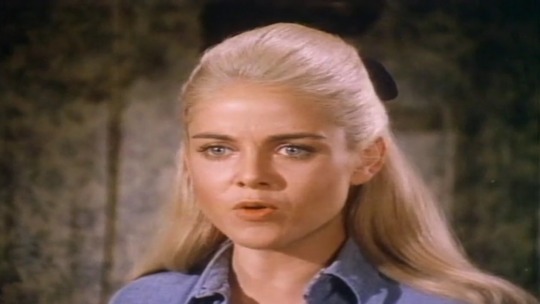




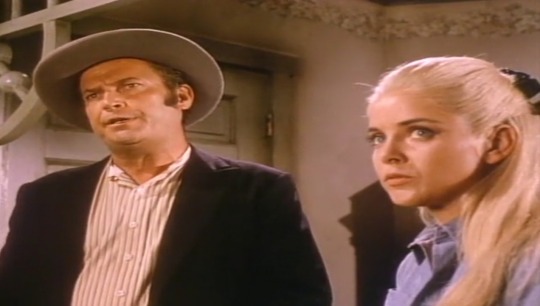
Sue Lyon as Belinda Ballard
The Virginian: The Men from Shiloh (TV-show), 1970
Ep. "Experiment at New Life" by Jeannot Szwarc
2 notes
·
View notes
Text




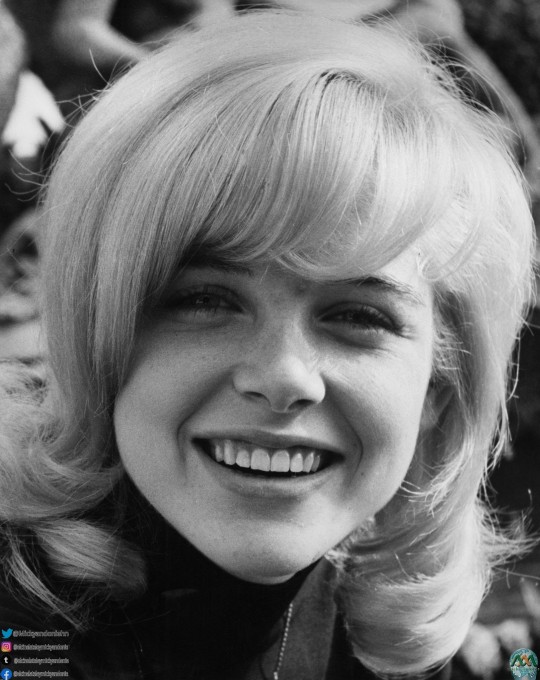
Sue Lyon.
Filmografía
- La bestia bajo el asfalto (Alligator) (1980) como periodista de ABC
- Towing (1978) como Lynn
- La isla de la fantasía (Fantasy Island) como Jill Nolan (1 episodio, 1978)
- Don't Push, I'll Charge When I'm Ready (1977) como Wendy
- End of the World (1977) como Sylvia Boran
- Crash! (1977) como Kim Denne
- Smash-Up on Interstate 5 (1976) (TV) como Burnsey
- Invisible Strangler (1976) como Darlene DeLong
- Love, American Style como Barbara Eric (segmento "Love and the Bed") /(2 episodios, 1969-1974)
- Una gota de sangre para morir amando (1973) como Ana Vernia
- Tarot (1973) como Angela
- Galería Nocturna (Night Gallery) como Betsy (1 episodio, 1971)
- Evel Knievel (1971) como Linda
- Storefront Lawyers (1 episodio, 1971)
- El virginiano (The Virginian) como Belinda Ballard (1 episodio, 1970)
- But I Don't Want to Get Married! (1970) (TV) como Laura
- Four Rode Out (1970) como Myra Polsen
- Arsenic and Old Lace (1969) (TV) como Elaine Harper
- Tony Rome (1967) como Diana Pines
- The Flim-Flam Man (1967) como Bonnie Lee Packard
- 7 Women (1966) como Emma Clark
- La noche de la iguana (1964) como Charlotte Goodall
- Lolita (1962) como Lolita
- Letter to Loretta como Laurie (1 episodio, 1959).
Créditos: Tomado de Wikipedia
https://es.wikipedia.org/wiki/Sue_Lyon
#HONDURASQUEDATEENCASA
#ELCINELATELEYMICKYANDONIE
2 notes
·
View notes
Photo

En Lyon ya alcanzó la penúltima ronda y esta semana ha brillado con luz propia en, deseosa de dar más campanadas en la gira de tierra que va cogiendo forma. El botín es importante: Belinda Bencic (octavos) y Barty son presas mayores. “Intento jugar cada partido de la misma manera. Acabo de ganar a la número uno y estoy un poco en shock, pero voy a tratar de cenar con normalidad, me levantaré mañana [por hoy] y jugaré otro partido”, indicó antes de merdirse a Kudermetova, a la que no ha podido rendir ninguna de las tres veces que se han enfrentado. Oscar Leyva Oscar Leyva Ciudad España Madrid PP Panamá Dubai Miami Copa Davis #España #Madrid #PP #Tenis #OscarLeyva #OscarLeyvaCiudad #CopaDavis #Madrid #Panamá #Dubai #Miami (en Segovia España) https://www.instagram.com/p/COsVyb4MzMJ/?igshid=l8w8ygs5ia04
0 notes
